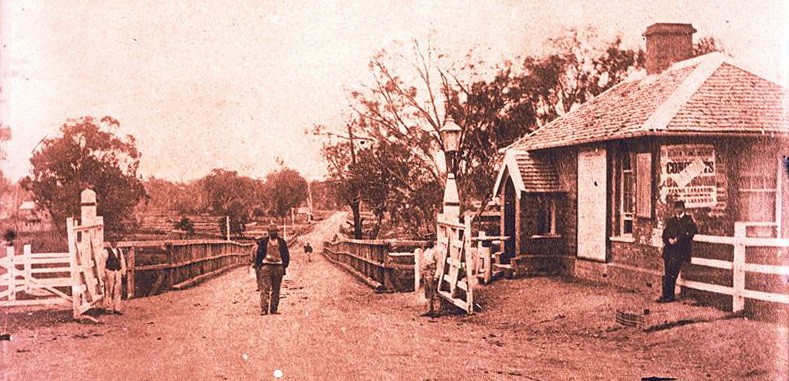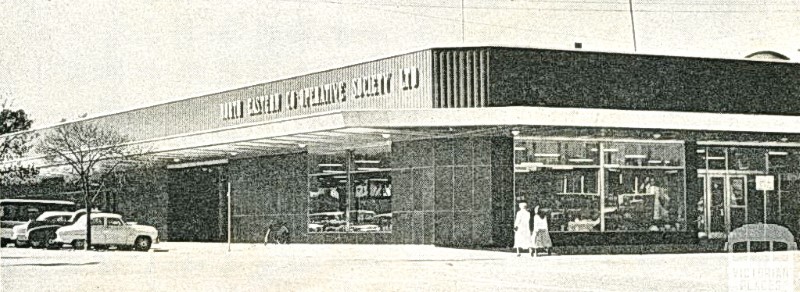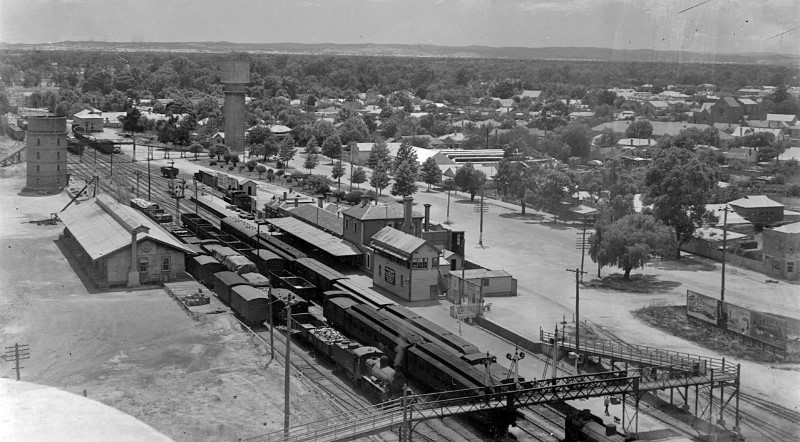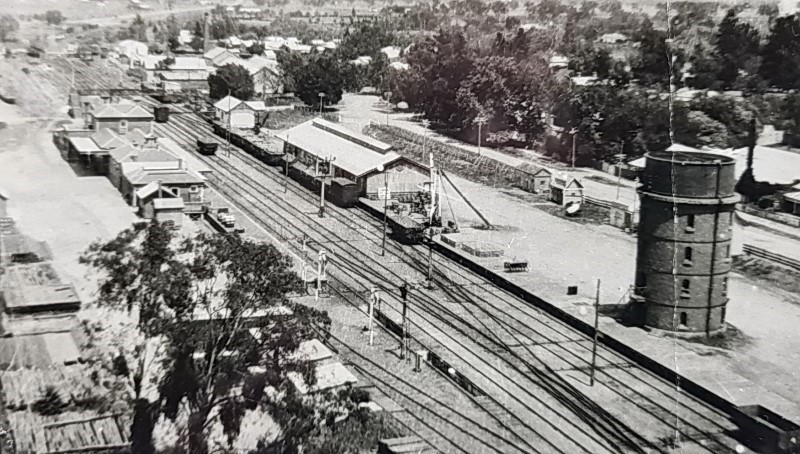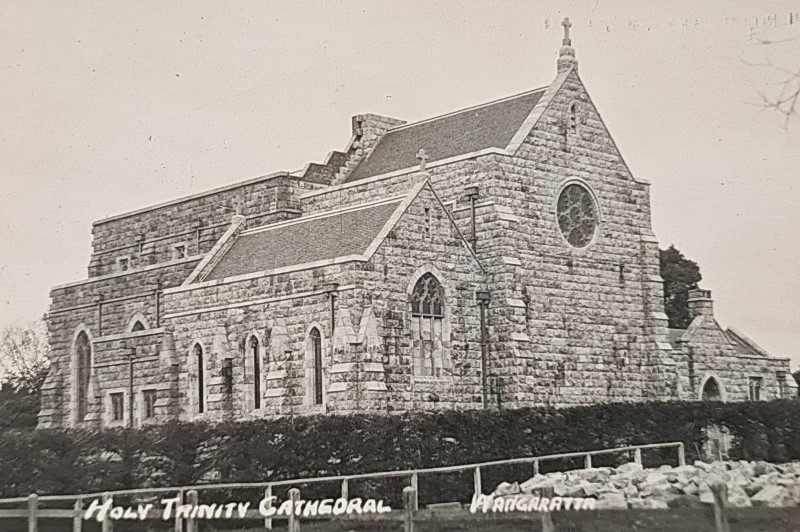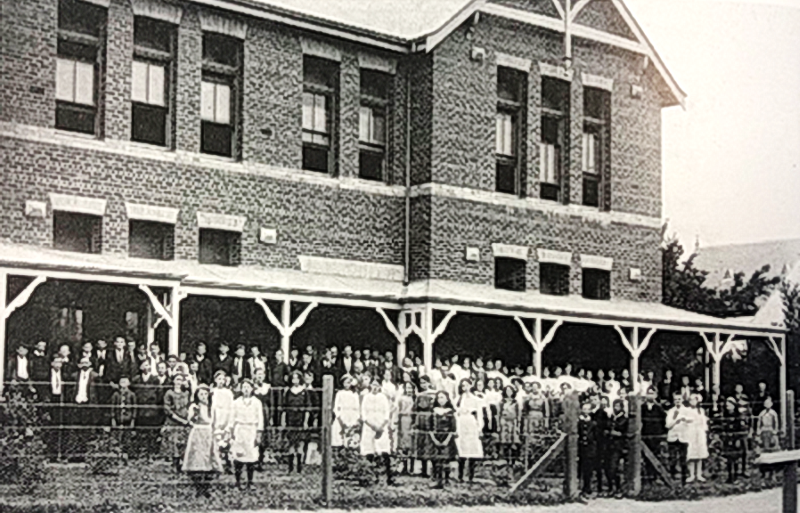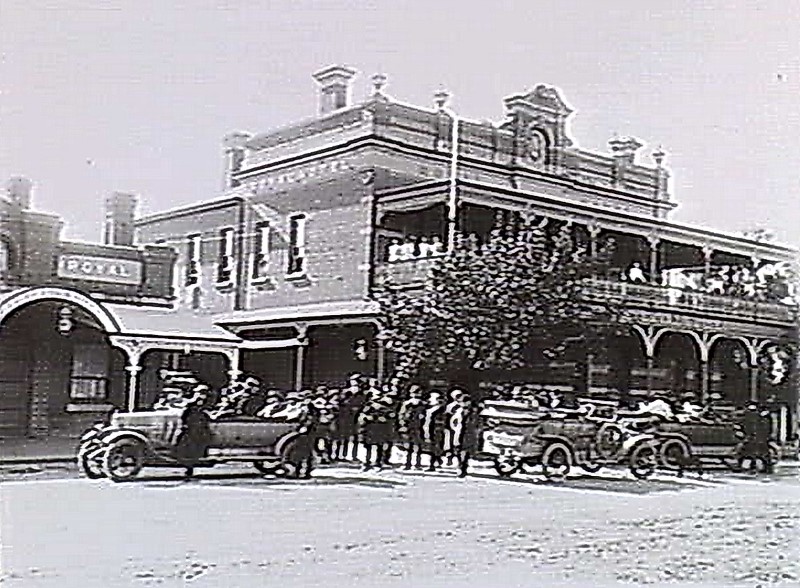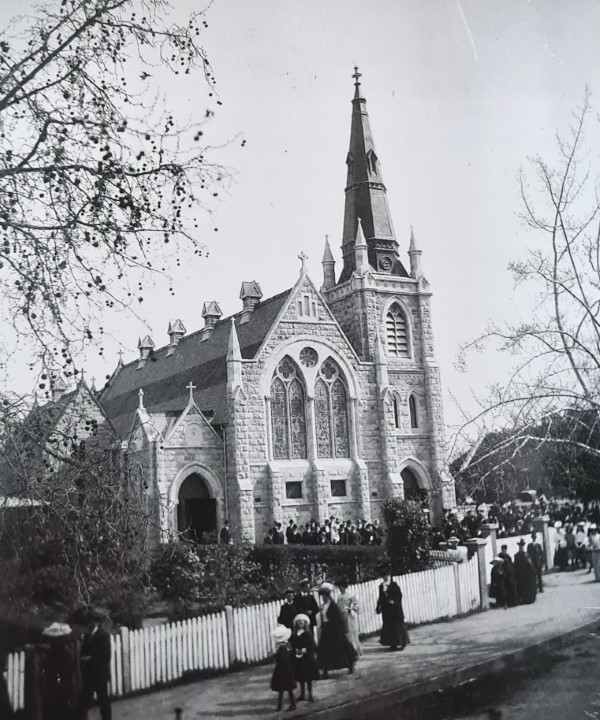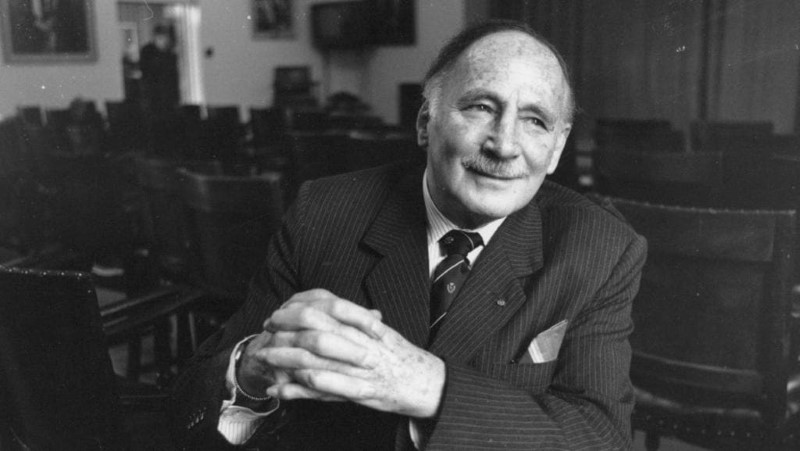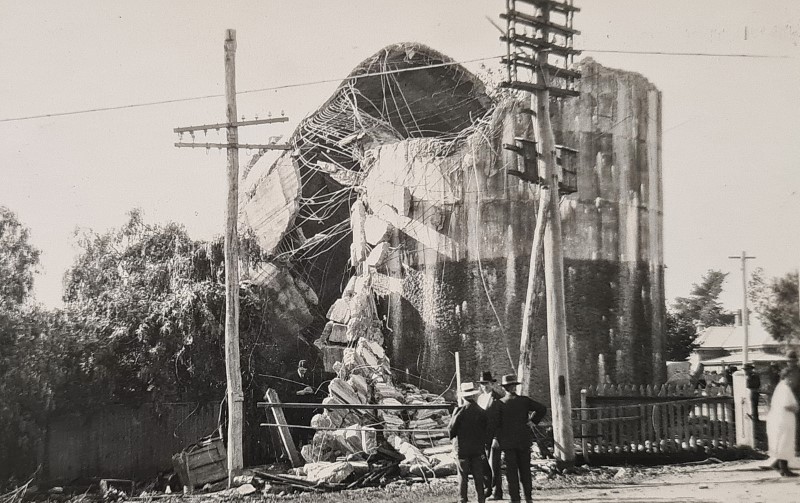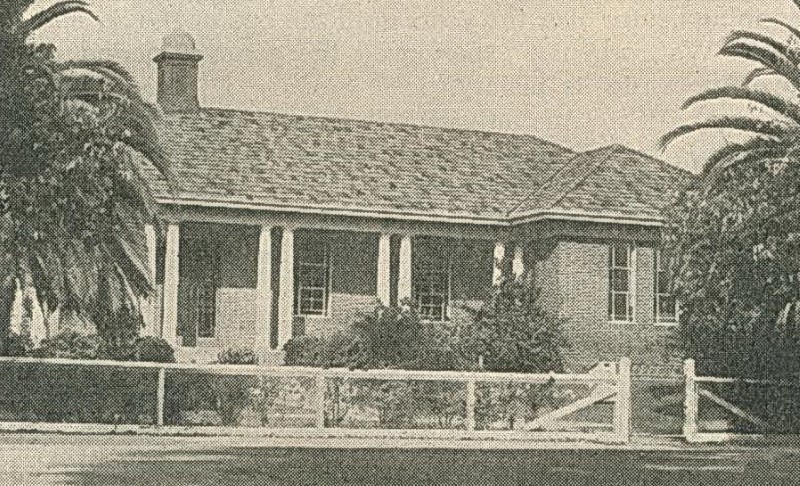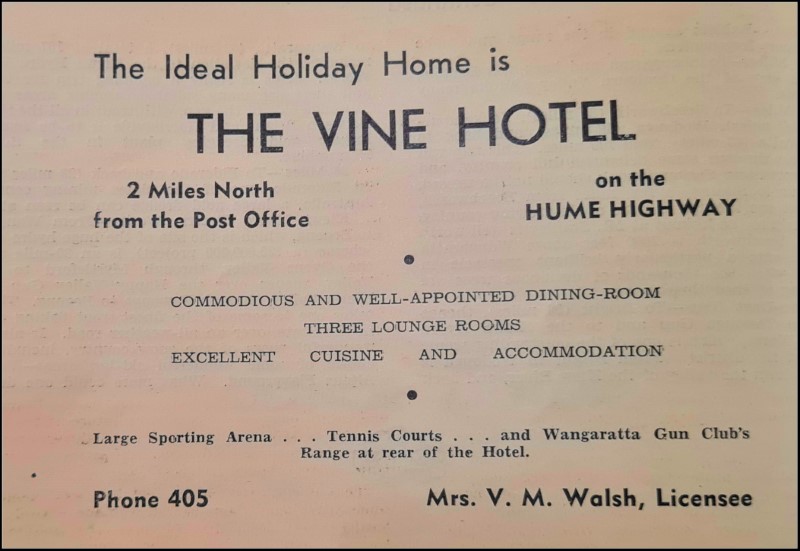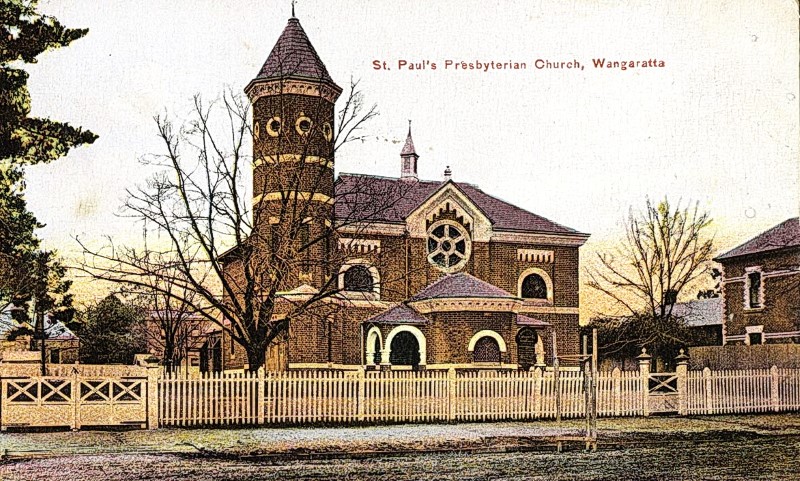RIVER CROSSING
Both the Ovens and King Valleys have respectively named rivers which meet in Wangaratta.
From 1838 Thomas Rattray operated a punt across the Ovens at the ‘crossing place’ which became Wangaratta town. His business, which also included a store, was purchased towards the end of 1839 by local squatter William Clark, who set up the Hope Inn and monopolised the crossing traffic with his punt. In 1848 or 1849 Clark commissioned Phillip Keighran to build a larger, hand-sawn, red gum craft for £500. This punt was at least 30 feet long and 16 feet wide, and a windlass hauled it across the river with several lines of strong rope at each end. From January 1853, the punt was owned by the government and a toll-house was placed at the riverbank.
John Crisp was also known to have conducted a punt, but it was never as successful as Clark’s, which took thousands of miners across the river, and was used by the gold escort on its journey to Melbourne. The punt served to facilitate the movement of government officials as well as travellers and their goods, and it promoted the early settlement of the Wangaratta township. The opening of the first bridge across the Ovens at Murphy Street in 1855 made the Wangaratta punts obsolete. A number of bridges were constructed over the years, the current one was built in 1983.
Clark’s historic punt was rediscovered late in the summer of 1964, when the waters of the Ovens River were unusually low and clear. Amazingly the craft was still intact with nails, spikes and great, water worn timbers still in place. After many attempts to remove the punt failed, pieces of it were recovered and stored for historical display.
THE CO-STORE & SHOPPING
Originally, one of Australia’s oldest retail co-operatives, The North-Eastern Co-operative Society Store was originally a general store with its owners being share-owning people of the district. The idea for a co-operative store arose with Michael Reid and John Marks wanting to start up such a store in Milawa, but after canvassing the proposal with interested community members they were persuaded to open in Wangaratta.
Over 30 enthusiastic locals attended an inaugural meeting held at the Royal Hotel in Reid Street in September 1905, and the first meeting of the new society followed on 16 November 1905.
A site on the corner of Ovens and Reid Streets opposite the saleyards was decided on for purchase, and the North Eastern Co-op Society was formally established on 2 March 1906, with a board elected later that month. Soon after, architect J.E. Lundholm (of Trotman’s Buildings) prepared plans for a large store with 10,000 sq feet of floor space, and tenders were let in May to E. Beardmore.
The store opened with a staff of ten on 15 September that year, selling grocery, hardware and produce. The Co-Op Store flourished and expanded and by 1963 it had a staff of 94 and 24,000 sq ft of trading space. When this local institution celebrated its 70th birthday in 1976 it enjoyed sales worth over $5 million and was the largest and most successful co-operative store in Victoria. In the 1990s it was divided into smaller lettable arcade shops with cinemas above.
Other stores thriving at various times in Wangaratta include, Thomas Irving’s White House. Established in about 1876 it traded in hardware, furniture, joinery and also operated as a funeral parlour before it closed in 1958. Other well-known stores were Osmotherleys, Pinkertons, Kendalls, Manleys, Sloans, Maples, Coles and Callanders.
In 1981 it was announced that Wangaratta was to be the site for Victoria’s first rural K-Mart store which opened as “Super-Kmart” on 27 June 1983. Coles closed its Murphy Street store the same year.
THE RAILWAY
The Railways opened up and connected Australia. The North-Eastern line from Melbourne began construction in 1869 and opened to Wangaratta in 1873 before the section of the line to Belvoir (Wodonga) was completed later that year. The current station building dates from 1874. The Victorian line was not extended across the NSW border to Albury until June 1883.
Wangaratta became an important railway centre with branch lines opening to Beechworth in 1876, Bright in 1890 as well as lines to Peechelba East, Wahgunyah and in 1889 a narrow-gauge line to Whitfield.
GAS AND POWER
Gas first became available in 1888. The gas company also provided tar for road and footpath making.
In 1962 the Colonial Gas Association converted to propane gas.
Wangaratta’s electricity was finally switched on officially, on 14 September 1922. The town became one of the last in the district to convert to electricity due to the monopoly enjoyed by the gas company. As discussions dragged on, a solution was presented by the new Wangaratta Woollen Mills company, incorporated in 1920. As they were about to build a large mill and generate their own power, they offered to supply electricity to the town as well. Their scheme was accepted by Council in July 1921, and the following year electrical contractors started work in the town, resulting in the completion of a powerhouse in April, followed by the erection of poles and wires. This power source was superseded by electricity from the Kiewa hydro scheme, completed in 1944.
NEWSPAPERS
John Rowan came to Wangaratta around 1861, opened a printing works and on 21 March 1862 produced the first town newspaper officially known as the Wangaratta and Benalla Dispatch. At first the paper was printed by hand on an Eagle Press from a timber and iron building in Murphy Street opposite Ely Street, with the office located in Reid Street.
A second newspaper, the Wangaratta Times, was produced by Mr W. H. C. Hughes, at Reid Street from about
the late 1860s.
In December 1870 Angus McKay purchased the Dispatch and published it until 1907. The newspaper was published twice weekly from 1882 and bought out another rival journal, the Wangaratta Star which George S. Searle had started in Faithfull Street in September 1872.
In 1891 the Dispatch installed new printing machinery supplied by Messrs Gordon and Gotch of Melbourne.
The Dispatch’s main rival was the Chronicle, which was started by George Maxwell in 1884, and survives to this day. It issued from a building in Murphy Street, and a few months into circulation John Bowser became part owner and editor. After 35 years in politics Bowser returned to the newspaper and became the sole owner in 1905, and only relinquished control due to ill health in the eighteen months before his death in 1936.
After McKay’s retirement, the Dispatch was run by Reg Norton, former chief reporter of the Chronicle. He was bought out in 1921 by Chronicle-trained William T. Higgins, who amalgamated the two newspapers after Bowser’s death in 1936 to form the Chronicle-Despatch.
HOLY TRINITY CATHEDRAL
The most imposing building in Wangaratta. The Cathedral was built in stages, with most of the granite coming from the nearby Warby Ranges
In 1855 Wangaratta Anglicans met at the Court House to discuss building a church on the hill, the present site of Holy Trinity Cathedral.
In 1908 the foundation stone of the Cathedral was laid by the Right Reverend AV Green, Bishop of Ballarat, and the Cathedral was dedicated on August 24th 1909.
Very early services had been conducted in a slab building on the corner of Baker and Templeton Streets, built by John Ford.
MERRIWA PARK & GARDENS
A sunken natural park, originally a meeting place of the Bpangerang Aboriginal Tribe. Merriwa means the rich flat ground at the bend of a river. In 1904 Merriwa Park became a bathing reserve.
1908 was a big year, with the construction of the Swing Bridge, the Carriage Way, Band Rotunda, Boat Shed and the Tea House. Sports carnivals, including swim carnivals were held to raise money.
A Womens Swimming pool was constructed, with excavations taking place in 1914.
In the 1920’s the Tennis Club was formed, mixed bathing came in, and the park became a sports complex and not a garden. The swimming pool was no longer needed when the Olympic Pool was constructed in Swan Street.
In the I 950’s more Tennis Courts were built, the Band Rotunda removed, the water piped under, the bridges removed, and the Kindergarten was built.
A bygone era, when the band playing in the rotunda would pause, across the evening air there would come a perfect reproduction, – the echo of Merriwa Gardens.
RADIO
On 26 February 1925 Wangaratta radio station 3WR on the corner of Murphy and Reid Streets came on air and could be heard all the way to Beechworth. The service commenced with two items played from a gramophone followed by a live solo rendition from Miss Vallander. Wangaratta’s radio station was the third to commence in Victoria, and the first licensed commercial station in country Victoria.
Unfortunately the station’s life was short as a public broadcaster and it ceased to operate in December of the same year. It became a licensed commercial station again in 1931.
The first long lasting radio station, 3NE, was officially opened in 1954 by the Attorney General and Acting Postmaster General, Senator Spender, at a variety concert at St Patrick’s Hall.
THE CENTRE
Established in 1909 as an Agricultural High School, and became the Wangaratta High School in the 1920’s.
The Agricultural High School was one of the oldest secondary schools in the state. The Agricultural section of the school was in the borough park (HP Barr Reserve) and consisted af 28 acres.
In 1961 the school was vacated when all classes moved to the new high school in Edwards Street. In 1962 the building became known as The Centre for Continuing Education, the first of its type in the state.
Today the Centre provides a variety of courses in many disciplines. The original facade has been preserved.
PINSENT HOTEL
The Pinsent Hotel began life as a private hospital. In the 1850 land sales Dr Gemmell bought the allotment and erected the first hospital in the district. It was one of the first brick buildings in the township and probably the second two storeyed. In 1851 it was acquired by John Crisp who converted it to a hotel, named The Royal.
Miss Annie Edith Pinsent ran the hotel from 1917 until 1934 and the hotel became known as the Pinsent. All of the two storey exterior is the original building, however the inside has been remodelled over the years.
ST. PATRICK’S CHURCH
Proir to the construction of the imposing church in Ford Street the Catholic congregation had worshipped in a school chapel where the present St Patrick’s Hall is today
Appointed parish priest in 1862; Father George Galen began building the present church in 1865. The foundation stone was blessed in 1866 by the Roman Catholic Bishop.
The church was designed by William Wardell, the architect for St Patrick’s Cathedral, Melbourne and St Mary’s Basilica, Sydney. The original material used was a white Beechworth granite to which was later added the brown Glenrowan stone. Most of the nave, the sanctuary, the sacristies and the eastern aisle had been completed at a cost of 6000 pounds when Father Galen died in 1869. The church was enlarged in 1962.
TOWN HALL OVER THE YEARS
A site with a long history beginning with the original (1868) Municipal Offices and Shire Hall. This was demolished for a new Memorial Town Hall which was opened by the Governor of Victoria, Sir Rohan Delacombe in July 1963, the day the city celebrated 100 years of local government. The new hall seating 642 people was erected as a memorial to those men and women who served their country in two world wars. In addition to the main hall there was a smaller hall, later named the Playhouse Theatre which could seat 195.
The 60s building served the community for 50 years until it too was demolished for the building of the new Wangaratta Performing Arts Centre containing both multi-purpose hall and a legitimate (2 level) theatre auditorium.
Purchased in the 1960s the new venue retains its magnificent Steinway Grand Piano, regarded as one of the finest in the world.
BIRTHPLACE OF SIR WEARY DUNLOP
The corner of Mackay and Cusack Streets was once the site of Lister Hospital, birthplace of Sir Edward Weary Dunlop.
WATER TOWER
This is the second tower built on the site. The first had a short existance. Erected in 1924, the concete tower crashed to the ground a year later, destroying electric and telegraph wires and the verandah of a nearby house.
The second structure, opened in 1929, stood the test of time and for years it was the main storage tank.
WANGARATTA INSTITUTE OF TAFE
Impressive verandah columns adorn the entrance to the administration centre of the institute of TAFE, originally the Wangaratta Technical School.
Opened in 1928 to satisfy the increasing demand for technical education, there was an initial enrolment of 64 day and 205 evening students. So great was the growth of technical education that in 1956 the junior school was transferred to Greta Road.
VINE HOTEL
At North Wangaratta there still stands the Vine Hotel. Built as a single storey structure in the 1860s by Henry Parfitt, the hotel also served as a general store and post office and for some time its rooms were used for meetings by the Wangaratta Shire Council. After the hotel was destroyed by fire in 1883 it was rebuilt by Parfitt. The Vine remains a popular today and still houses a large cellar which once contained an escape tunnel used for escape by bushrangers. Whilst the Ned Kelly gang were based south in Glenrowan, Bushranger Joe Byrne lived north at nearby El Dorado.
EXHIBITIONS GALLERY
Originally, the gallery was the Presbyterian church built in 1899, the second church of that denomination in Wangaratta. When the Methodist and Presbyterian Churches amalgamated to become the Uniting Church, the building was no longer required as a place of worship. It was purchased by the city council in the mid 1980’s and has been converted into a gallery where exhibitions are conducted continuously.
The facade, a splendid example of Neo-Romanesque architecture has been preserved, as has most of the original building.
FORMER LIBRARY
Now the Visitor information Centre the building was first erected on this site in 1858. It was demolished and the free library was opened in 1909 and remained until the 1990s. The library is now located in the original Technical School building.

